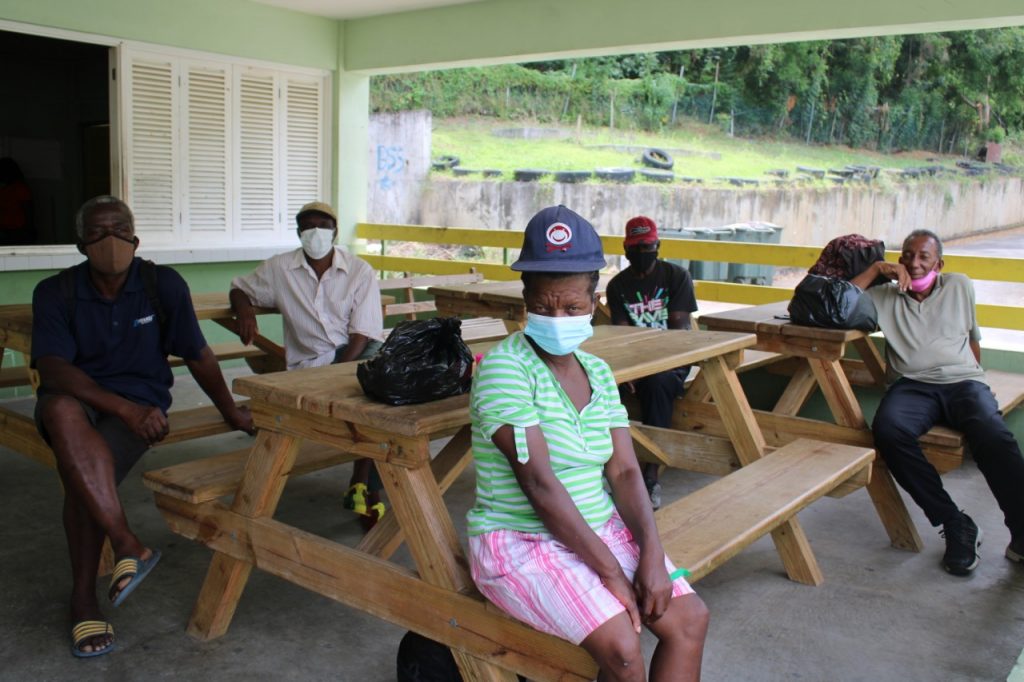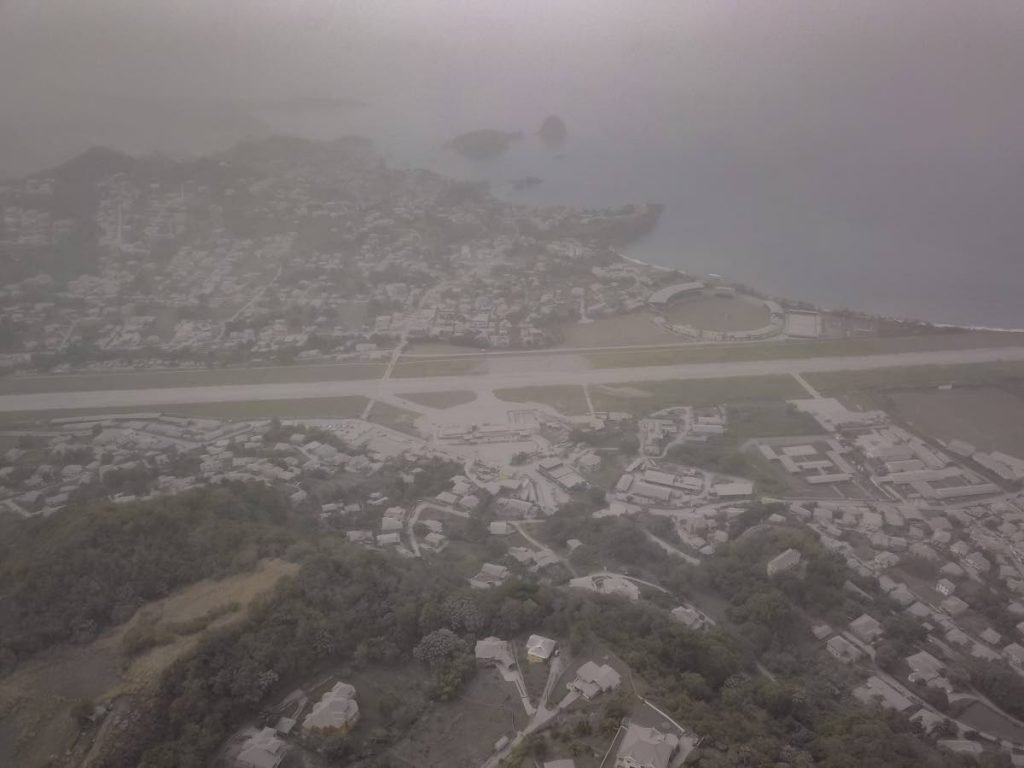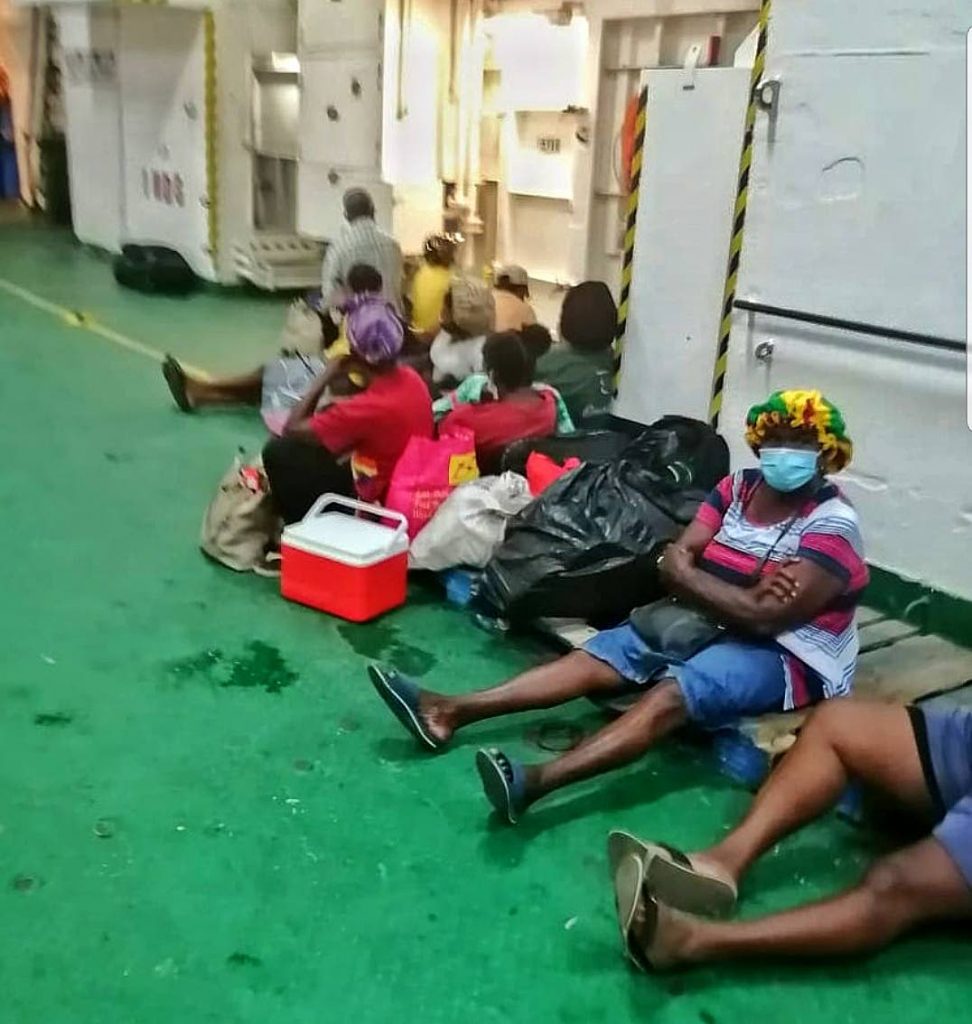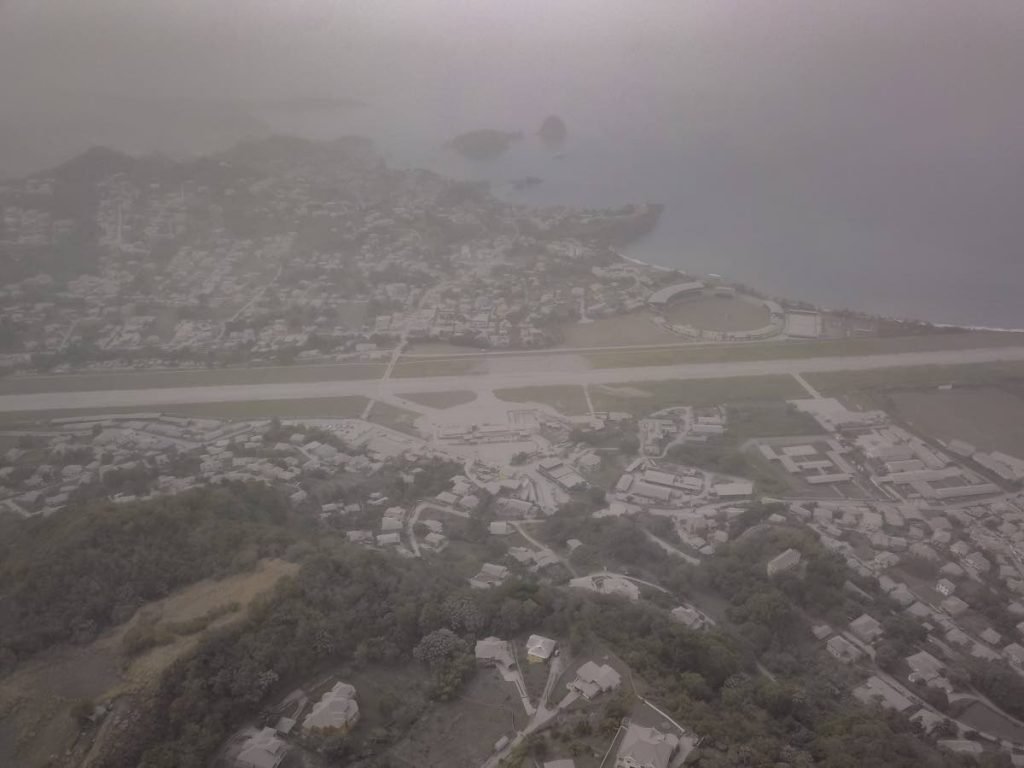[UPDATED] 3,000 in shelters, volcanic ash covers St Vincent

More than 3,000 people are in shelters in St Vincent and the Grenadines as the islands continue to be covered in volcanic ash from the La Soufriere volcano.
Editor-in-chief of Searchlight newspaper, Clare Keizer, said by noon on Saturday there were reports of about 3,200 people in shelters and those who did not evacuate from the red and orange zones were either leaving or calling for assistance to leave the area.
“One of the reasons why some people said they did not want to evacuate was because of what happened the last time (1979). People broke into their homes and businesses and so on.”
On Thursday, Prime Minister of SVG Dr Ralph Gonsalves issued an evacuation order for people in the red zones on the northeast and northwest of the islands.
La Soufriere first erupted early on Friday and by 7 pm there had been three “explosive events.” It is the first time the volcano erupted since 1979. Dr Erouscilla Joseph, director of the UWI Seismic Research Centre, said La Soufriere erupted throughout the night on Friday into Saturday, constantly pulsing ash into the atmosphere.
“So throughout the entire night there was ash venting. Associated with this were seismic signals. We have volcano tectonic earthquakes and long-period events which were recorded during the times of tremor,” she said.
Also at the site, lightning associated with charged particles in the eruption column was observed.
She said ash coated the entire area around the volcano and visibility was less than four kilometres, as the sun was obscured by the ash and it was “dark as night” on Saturday morning.
“People are smelling the SO2 (sulphur dioxide). The heaviest concentrations are in the red zones. It will bother people – but the ash is the main concern.”

She added that the sulphur dioxide was “above a certain flux,” earthquakes associated with active volcanoes, and ground deformation could continue for a while.
“This eruption could go on for weeks to months. Even when there is no ash column, no explosions, the volcano could still show signs of unrest. This could go on for a long time until it returns to what we know as ‘background’ based on all of the monitoring signals.”
The plume of ash caused the Argyle International Airport in the southeast to be closed on Friday morning and it is expected to stay closed until further notice.
Keizer said Kingstown in the southwest was closed, including businesses and the market. There were also reports that in the red and orange zones, the material coming out of the volcano was larger than elsewhere, some the size of small stones.
“Even on the southern tip of the island, in a green zone, there is a sea of white all around us. The ash is thick in the air and falling. I went outside briefly this (Saturday) morning and it was very uncomfortable breathing although I had on a mask, and my eyes felt gritty.”
She recalled experiencing the 1979 eruption as a young girl. She said they did not have advance notice but just woke up one Good Friday morning, heard the volcano was erupting and the ash started to fall. She was a Girl Guide at the time and assisted in packaging food for distribution while wearing hand-made masks.

“One of the benefits of this happening during the covid pandemic, if there is any at all, is that people already have masks.”
The volcano erupting has caused additional concerns about the spread of covid19 as the country’s covid19 vaccination process had been slow going because of vaccine hesitancy.
“In the camps you have people from outside your household in communal settings. If you have unvaccinated people the chances of an outbreak are greater.”
She said the government was attempting to send smaller boats up the northeast coast to assist with the evacuation efforts but rough seas were slowing down the process.
This story was updated with additional details. Below is the original story.
More than 3,000 people are in shelters in St Vincent and the Grenadines and the islands continue to be showered in volcanic ash from the La Soufriere volcano.
Editor-in-chief of Searchlight newspaper Clare Keizer said by noon on Saturday there were reports of about 3,200 people in shelters and those who did not evacuate from the red and orange zones were calling for assistance to leave the area.
She said in the red zones, ash and rubble the size of stones could be found and even in the green zones there was a thick layer of fine ash on exposed surfaces, and the air was uncomfortable to breathe.
Dr Erouscilla Joseph, director of The UWI Seismic Research Centre, on Saturday, said there was continuous ash venting throughout the night from Friday into Saturday.
“Associated with this were seismic signals. We have volcano tectonic earthquakes and long-period events which were recorded during the times of tremor.”
Also at the site, lightning and thunder associated with charged particles in the eruption column was observed.
She added that ash coated the entire area around the volcano and visibility was less than four kilometres as the sun was obscured by the ash and it was “dark as night” on Saturday morning.

On Thursday, Prime Minister Ralph Gonsalves issued an evacuation order for people in the red zones on the north east and the north west of the island.
La Soufriere first erupted early on Friday and by 7 pm there had been three “explosive events.” It was the first time the volcano erupted since 1979. Joseph said La Soufriere erupted throughout the night on Friday into Saturday, constantly pulsing ash into the atmosphere.
Video courtesy Demion Mctair/One News SVG


Comments
"[UPDATED] 3,000 in shelters, volcanic ash covers St Vincent"